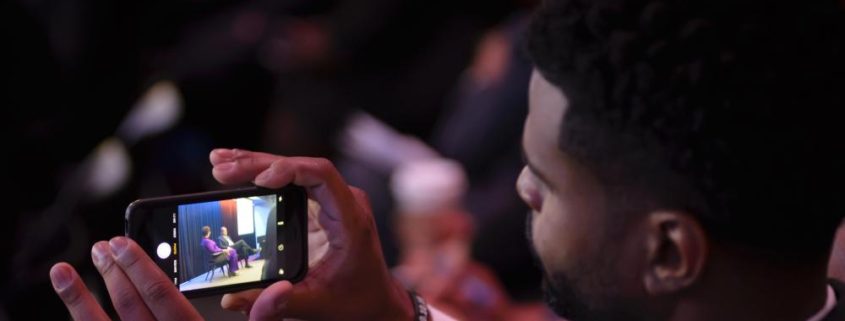Building Trust: Tips for Becoming a Better Spokesperson
By Carrie Fox
Earlier this week, I facilitated a media training workshop for a group of senior leaders in sustainability, though I admit the session featured more far more than media training 101. With a mix of traditional media training, presentation training and message development, we had a busy but powerful day. And in just a few hours’ time, we saw each of our spokespersons improve their confidence and their ability to articulate their most powerful messages.
How did we do it? Through teaching the art of improv.
The premise is simple. Improv performers don’t know what will happen onstage until they’re up there. They must know their lines, but they’re not reciting their lines from memory. They’re delivering a message, in the moment, and pivoting as needed to deliver their most compelling performance.
However, most spokespersons enter into media interviews or presentations with long winded talking points or a script that doesn’t easily allow for real-time pivoting, which reduces their ability to establish credibility. As we all know, conversations simply aren’t linear, and spokespersons—very similar to actors—must anticipate what might come next.
As I’ve shared in recent posts, to be an effective spokesperson or communicator of any kind, you must know with whom who you are speaking, and calibrate to their needs. What do they want to know? What do they expect to hear? And how can you serve as the best resource for them in that moment?
In his book, If I Understood You, Would I Have This Look on my Face?, Alan Alda (yes, Alan Alda) and his 6-year-old grandson discover an unusual tree. His grandson asks, “how did it get like that?” and thrilled with his curiosity, Alda jumps at the moment to talk about evolution — for 45 minutes. The next day, Alda overhears his grandchildren talking, and when his granddaughter says “that sounds like a question for grandpa,” his grandson replied, “I’m not making that mistake again.”
As Alda shares in his book and as we taught in the training, understanding your audience is the most important step to building trust and credibility. The more we establish a connection with our audience, the better chance they’ll listen to what we have to say—and possibly even accept it.
Here are a few other tips we shared in this week’s training:
Keep your Key Message Points Close. Think about your role of spokesperson as an actor on the set of a film. You must know your lines, but you’re not reading your lines…you’re reacting to what the other person just said. And to do that, you must be an excellent and active listener. Getting comfortable in the active listening role means that you MUST know your content. Spend time committing your key messages to paper, and practicing them (out loud), which will allow you to act in confidence that you’ll be able to pivot wherever an interviewer goes.
Practice the Basics. Being an effective spokesperson means more than owning your lines. It means being ready for the unexpected. Think about who your audience is and what they might ask you. Force yourself to think beyond the expected questions to uncover the tough questions. In our session, we used a bean bag to literally toss “hardballs” to one another as a way to practice active listening and to stay on our toes. Remember, preparation leads to increased confidence, which leads to your ability to achieve your goal: delivering a powerful and compelling message on behalf of your organization.
Step into their World. This phrase is a mainstay in improv. It’s a reminder that the scene isn’t about focusing on you. It’s about focusing on other people and the setting, rather than making yourself or your message the center of attention. In an interview, you’re also part of a scene that’s larger than yourself. Even if it feels like you’re the center of attention, remember you’re there to show how you fit into the whole picture. What role can you play? How can you best contribute to the development of this story?
Listen Fully, and Keep your Eyes on the Audience. The best place for your eyes is on your audience—not in your notes, or on your PowerPoint presentation. Practice holding your gaze just long enough to make a connection with your interviewer or audience. And when you must reference your notes, do not read from them. Use your notes as a reminder, but nothing should ever come out of your mouth when you’re looking at down at those notes.
When building trust, it all comes down to preparation. You must start by knowing your messages, but you’ll find success once you’ve built a routine of preparation and practice. And by keeping your audience at the center of the story, you’ll be ready for prime time, in no time.
Interested in improving your skills as a spokesperson or presenter? Email me to learn more about our upcoming media, message and presentation training workshops.





 Check out our new
Check out our new